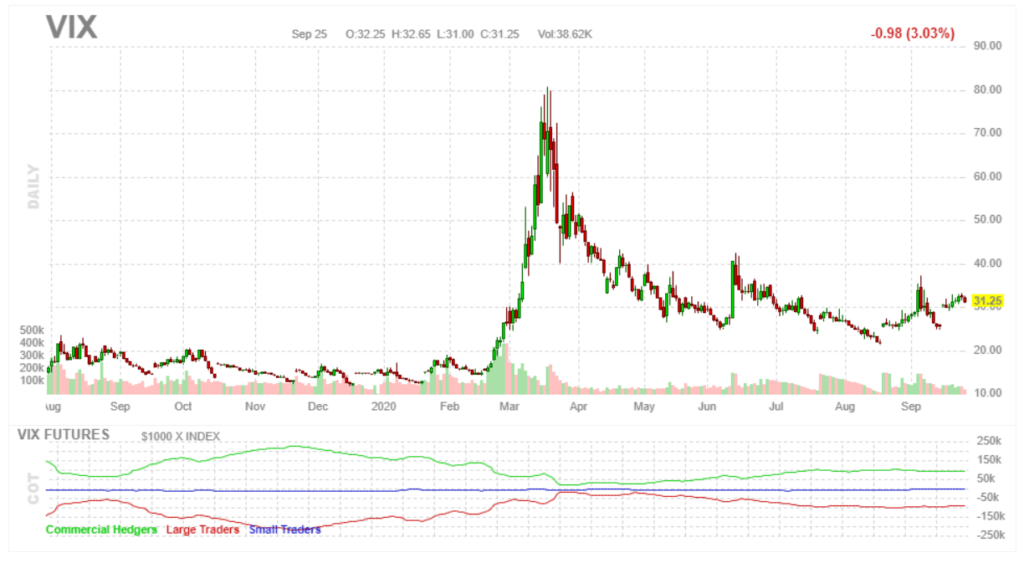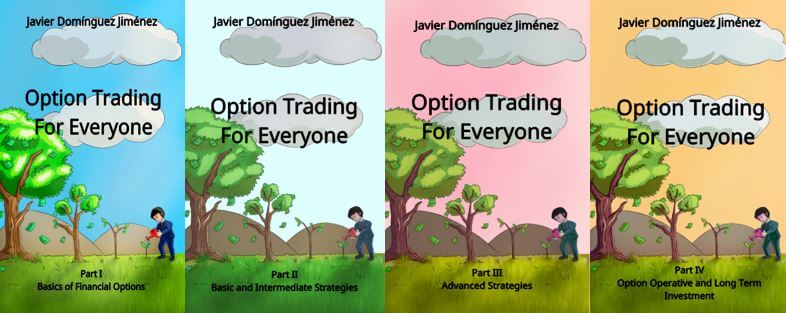Guide of Implied Volatility in Options and How It affects the extrinsic values
Whether we are dealing with stocks or any other financial instrument, implied volatility in options is a crucial factor that we really need to take into account when we face any trade. If the implied volatility for stocks is an important matter, in options trading, it is even more critical.
In this guide, we are going to take a look at what is the implied volatility in options, what does it mean, how to interpret it and how to use it as it will dramatically affect the trades when we deal with options.
We will also review the differences between implied volatility vs historical volatility, we will learn how to read the historical implied volatility data and much more things.
Table of Contents
Let us begin with the basics…
What is implied volatility in options?
The implied volatility definition is this: implied volatility is a statistical measure of how an asset has performed over the past and how it is expected to perform in the future.
There are two types of volatility: the implied volatility, which tries to measure future fluctuations, and the second one, historical volatility, which measures past fluctuations.
As usual, historical volatility is the easiest to measure and understand, as it is entirely based on the previous movements of the underlying stock.
Why is implied volatility important in options?
The reason why implied volatility in options is so important is because it will directly affect to the option premiums of the contracts.
Along with the relationship between the underlying price and the strike price, the implied volatility will determine the option premium.
What does implied volatility tell us?
The implied volatility tries to measure how much is a stock or another asset is likely to move over a period of time. For example, a high volatility means that the stock is expected to vary its price much more than a low volatility stock.
Amazon is a high volatility company because its stock prices fluctuate over 100$ in a single day. Starbucks stock is a low implied volatility company because the fluctuations of its prices are relatively small.
As a general rule, those stocks that have a higher stock trading volume tend to have a higher volatility, but this is not always the case with options.
Where to find implied volatility data?
In order to find the general implied volatility of the market, we should consult the VIX index, which is an index that measures the volatility in the entire market.
If the implied volatility in the market is high, it is also a sign that a bearish market is upon us. However, a low implied volatility means that we are in a bullish market.
You can find VIX data in Finviz.com
What is implied volatility in option chain, and which implied volatility to use in our trade?
When we want to open a trade, we must take a look at the implied volatility of the option we pretend to trade, not to the data of the VIX.
For example, let us take the SPY option chain, one of the most liquid ETF option chains you will find in the entire world.
Let us focus on the 273$ strike price. The even when the average SPY implied volatility of the chain is 41.7%, if we want to buy that call option, we should take only the implied volatility of the ask of that strike price, which is 40.769%
However, if we want to sell that same call option, the SPY implied volatility of that strike price is 40.441%, and that is the data we must consider only for the trade.
How does implied volatility affect options price?
Mostly, the options implied volatility is critical to see how the prices change. The higher the volatility, the higher the premiums of the options. So, we should focus on selling high implied volatility options and on buying low implied volatility options.

Volatility at 10%

Volatility at 60%
As you can see, in both call and put options, by increasing the implied volatility, the option premium will abruptly increase too.
Do you need a Calculator that helps you create and analyze any option strategy in record time?
Can implied volatility be negative?
No, implied volatility cannot be negative. It can be very low, but not negative.
The reason is simple. As implied volatility is the one that shows us how much the price is going to fluctuate in the future, a negative implied volatility would not make any sense at all.
Can implied volatility be greater than 100?
Yes, but we will find those implied volatilities in options whose underlying have done abnormal movements.
What implied volatility is high?
We will consider a high implied volatility option for those with a value higher than 60% or more.
A moderate volatility would be a range between 30% and 60%. For any volatility, under 30% would be considered a low implied volatility.
When is implied volatility high?
We will find the highest implied volatility options near a dividend payment or an earning report because it is more likely that the stock prices move faster and abruptly in these two scenarios.
Also, we will find a higher volatility if an important new hits the stock, and a gap formation is created in the stock.
Which greek is implied volatility?
The greek that will determine how much does the implied volatility affects the option is vega.
Option vega is a parameter derived from the Black Scholes model of financial options. If you want to know more about this greek and how to calculate it, take a look at this article here.
Implied volatility vs historical volatility
To calculate historical volatility, all we have to do is take a specific time. For example, we could take 22 days, which is the number of working days of a month in the stock market, and convert that data into a number placed directly on our option calculator.
Implied volatility is a forward calculation that estimates the volatility that an underlying asset will have until a specific date.
Of course, the volatility can and will change. Through the implied volatility, which also includes the historical data, the option premium is calculated, and it is precisely this value is the one we will have to use in the option calculator.
In other words: implied volatility is used as a parameter in options, and it will change during the lifetime of the trade.
That is because it is a predicted value, and it is subject to market conditions and major economic events that may occur around a company or around a commodity, such as a heavy snowstorm that completely destroys a crop or, as we are today, an intense crisis.
Why is it essential to have an option trading calculator to include the implied volatility?
If we are going to trade options, it is very important to have an options trading calculator that will help us determine the premium of the options offline, so we can be sure that we are paying the exact premium.
If you want a calculator that includes the Black Scholes model, you can download ours for free along with our free Options Guide:










